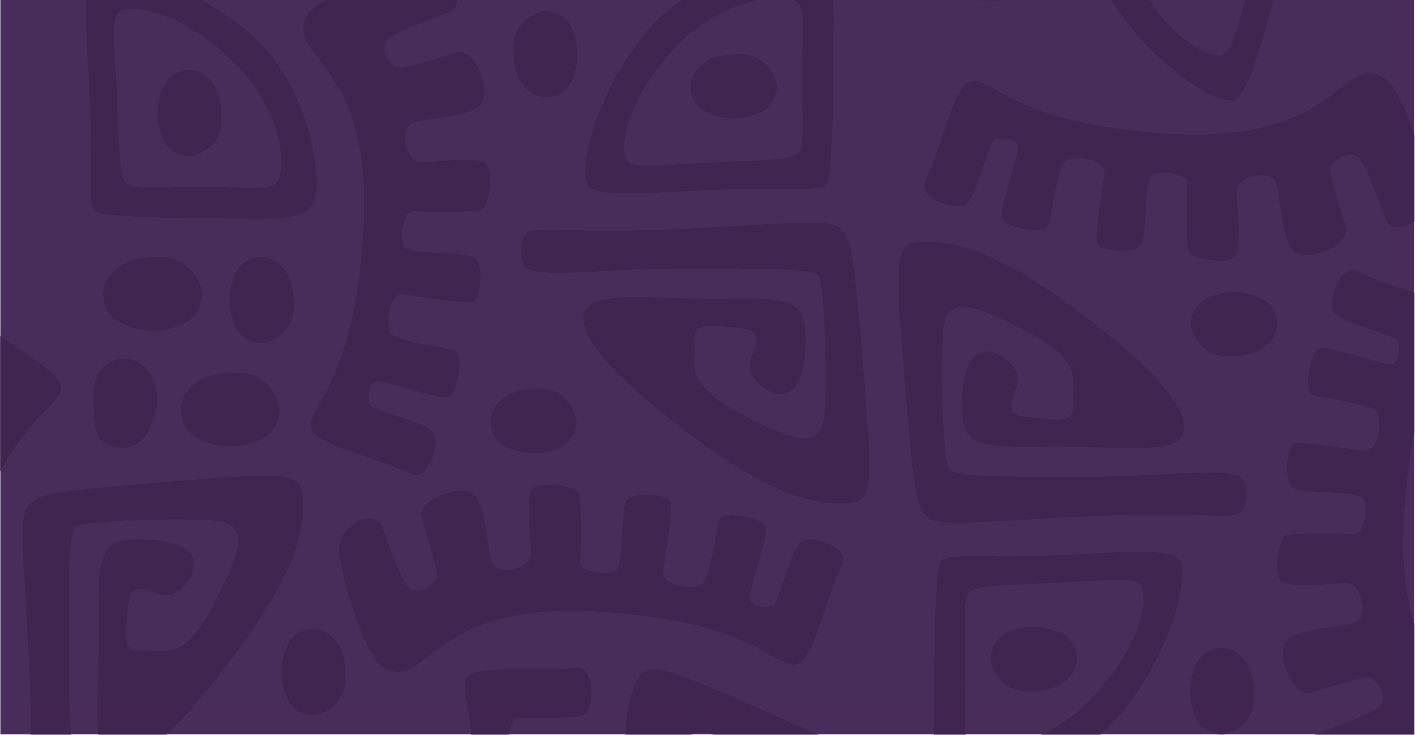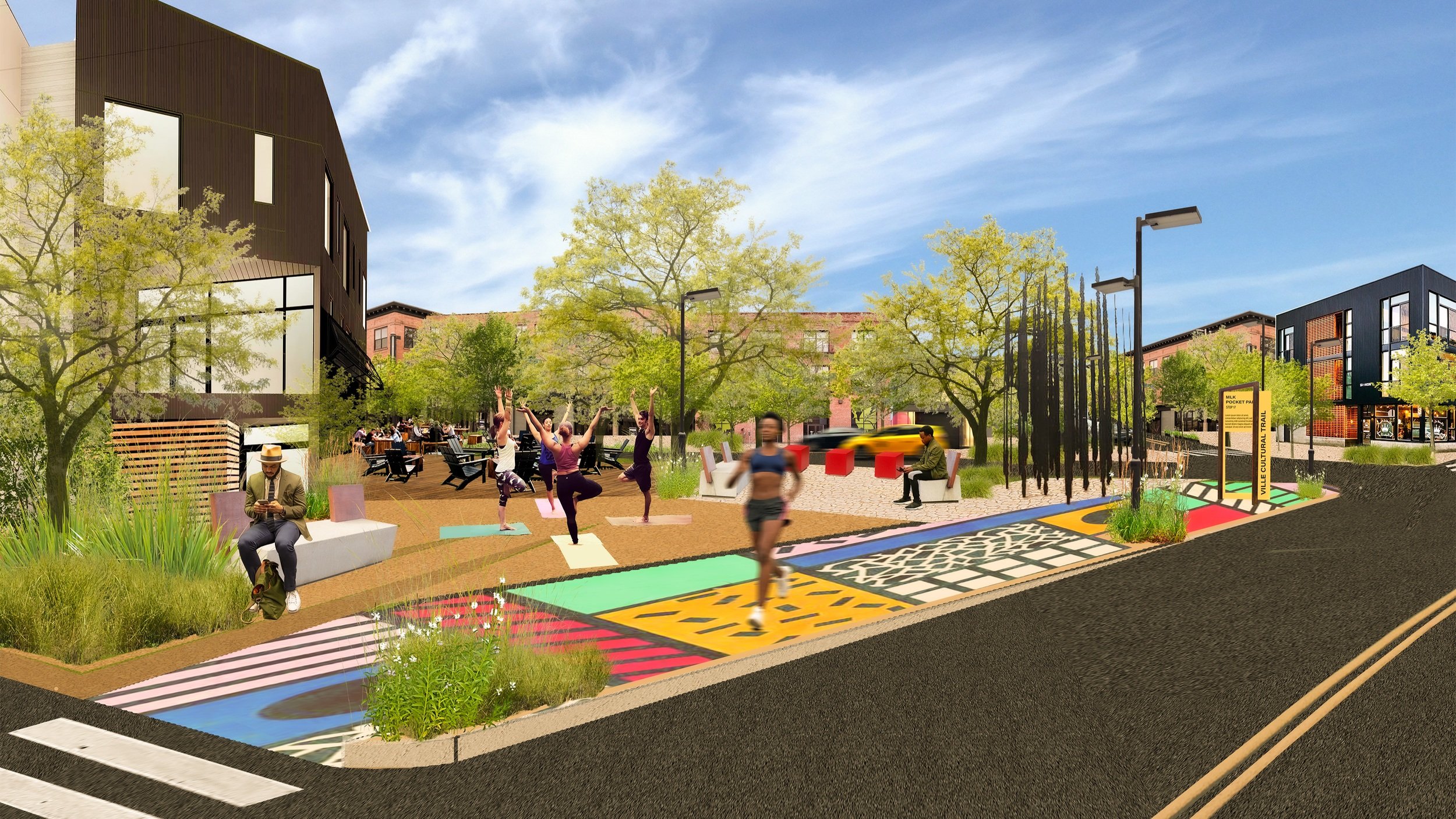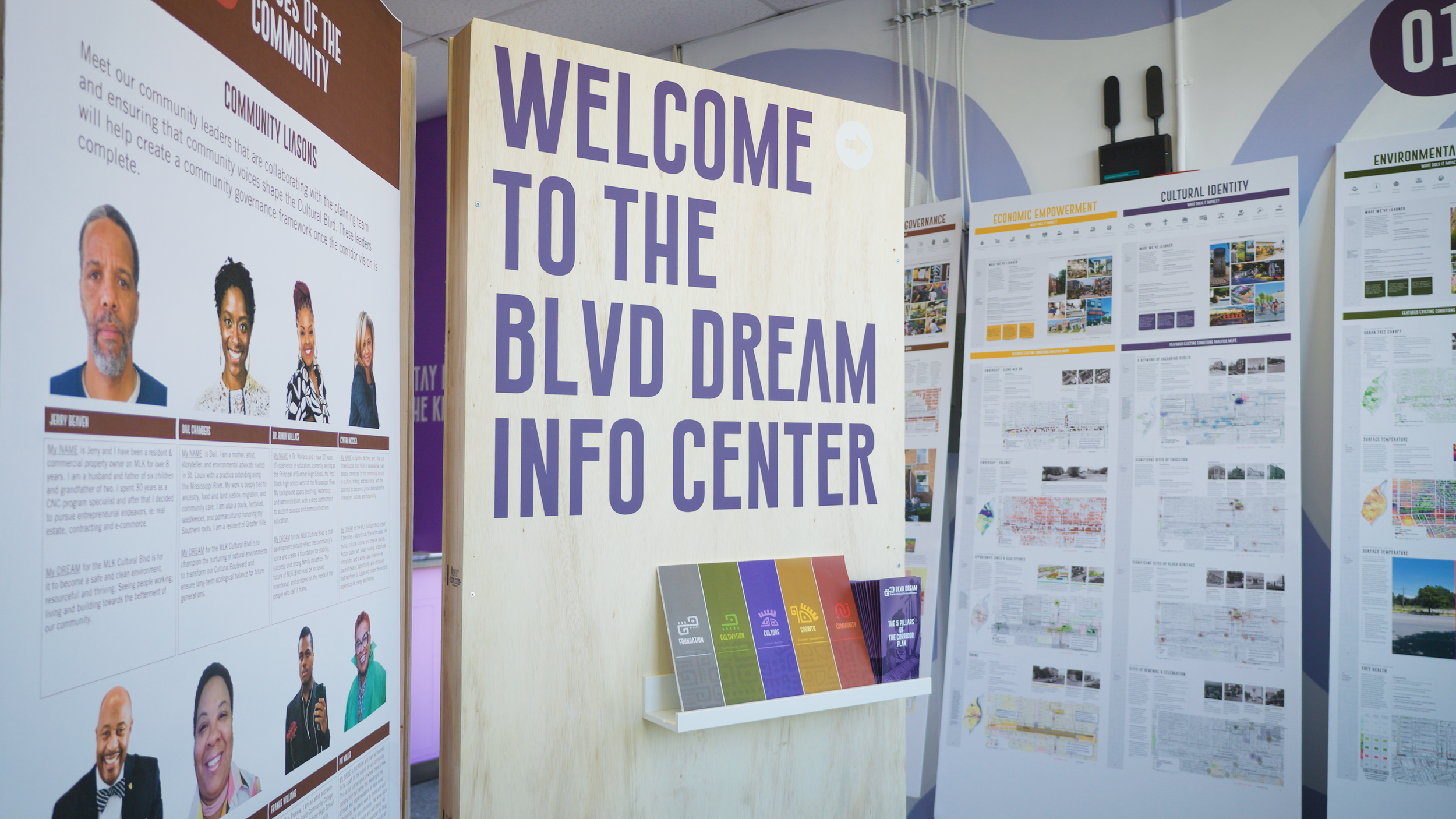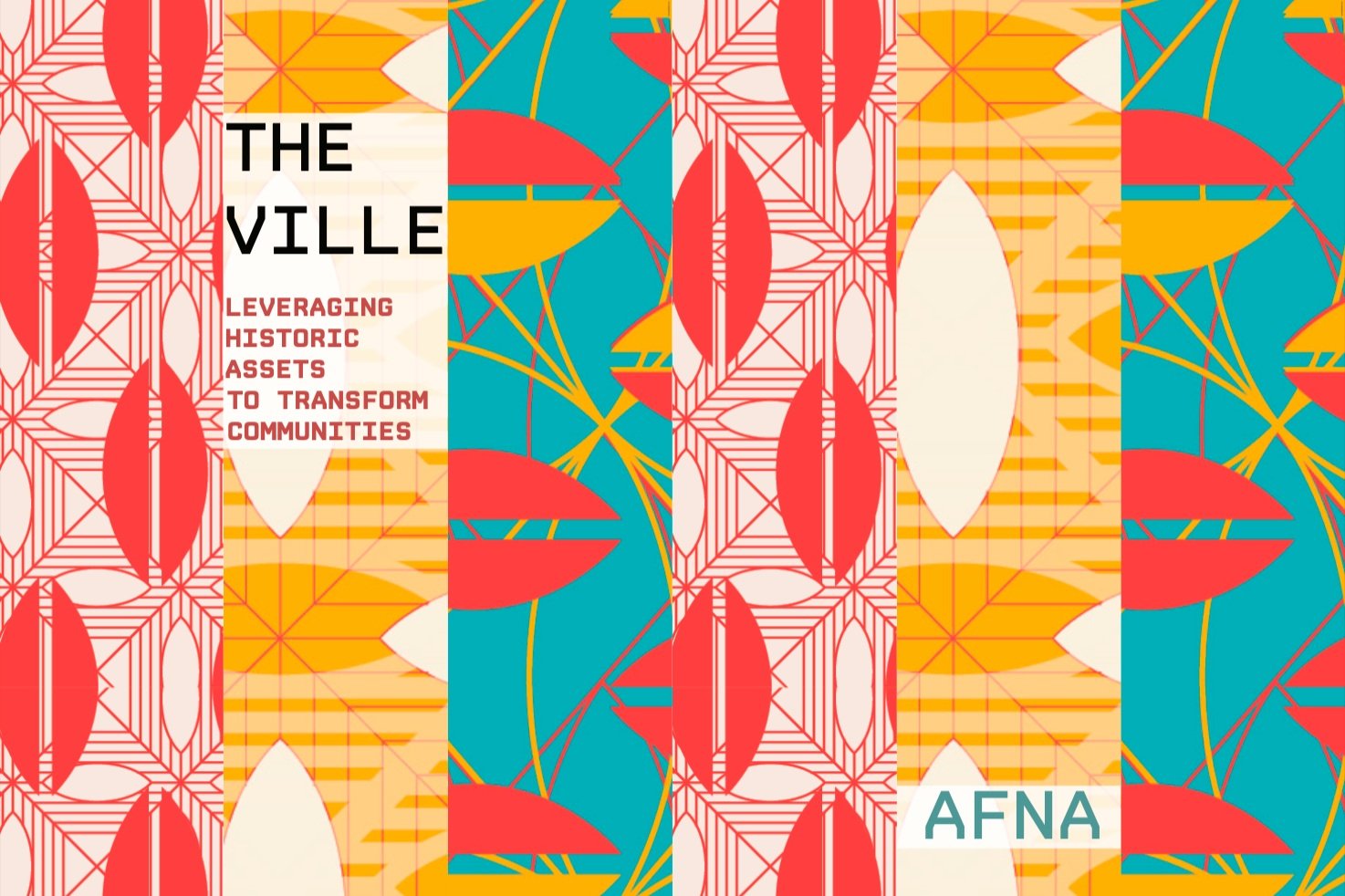

OUR VISION:
A NETWORK OF SACRED SPACES ANCHORING THE VILLE
The Cultural Blvd is a network of public infrastructure enhancements that anchor a culturally-rooted and vibrant MLK corridor, connect The Ville’s most sacred spaces, and support prosperity in the Black community.

Updates & Progress
TINA TURNER MURAL
Working with a MLK corridor business owner, 4theVille, St. Louis Shakespeare Festival, and Kranzberg Arts Foundation commissioned a mural of Tina Turner. We celebrated the completion with performances by the Sumner High School arts pathways!
BLVD DREAM INFO CENTER
Our new drop-in info center offers space for community members to stop by and receive updates on the Cultural Blvd Planning process. Come by and share your thoughts, dreams, and memories of MLK Drive. Get progress udpates and grab some merch to celebrate our Blvd Dream!
ARTHUR ASHE PLAZA
We are developing conceptual designs to begin a capital campaign for public amenities and interpretative installations that will honor Sumner tennis history and the legacies of Arthur Ashe and Richard Hudlin. Conceptual Design in progress!
THE FIVE PILLARS
“If you want to go far, go together.”
Using a collective impact model, 4theVille’s Cultural Blvd Project cultivates a range of disciplines through collaboration to develop better ideas and holistic impact. We use these Five Pillars to guide us and make the process accessible and relatable to all those involved and impacted.
COMMUNITY
Community comes from individuals who work together to create something whole. They’re able to reduce disparities in wealth, education, and healthcare while advocating for policies and uplift the community at large. Through participatory governance, civil engagement, and collaborative partnerships, it fosters divers representation and accountability.
FOUNDATION
Infrastructure sustains daily life, economic growth, and well-being through transportation, utilities, and connectivity. Well-planned systems enhance safety, resilience, and equity, ensuring communities remain functional, connected, and adaptable. Investing in modern, sustainable, and inclusive infrastructure ensures that communities remain functional, connected, and adaptable to future challenges.
CULTIVATE
Cultivating ecology and habitat for a community involves actively nurturing and maintaining natural environments to support biodiversity, sustainability, and resistance. By fostering healthy habitats, communities can strengthen local ecosystems, promote environmental stewardship, and ensure long-term ecological balance for future generations.
GROWTH
Economic development drives job creation, improves living standards, and fosters financial stability. A strong local economy attracts investment, supports entrepreneurship, and enhances public services, while sustainable growth reduces poverty and builds resilience for long-term prosperity.and improves the overall quality of life for residents.
CULTURE
Cultural identity is essential to a community as it shapes its values, traditions, sense of belonging, social cohesion and collective resistance. It connects individuals to their heritage and enriches the St. Louis community. Embracing cultural diversity promotes mutual understanding, inclusivity, and innovation, helping communities thrive while maintaining their unique identities.

EXISTING CONDITIONS
Through the five pillars of the Cultural Blvd, our team has done extensive research into the existing conditions of the MLK corridor. This helps to inform what’s working, what needs improvement, and how best to move forward.
Infrastructure
What We’ve Learned:
The MLK Drive has strong regional connectivity but suffers from excessive surface parking, poor sidewalk conditions, and limited pedestrian safety measures. Future revitalization efforts should prioritize the pedestrian experience through walkability, multimodal transportation, and public space activation and exceptional placemaking.
Opportunities Include:
Strong connectivity with Kingshighway & Grand
Established bus routes & pedestrian-scale lighting.
Opportunity to reimagine vacant land into public spaces and radically reclaim asphalt pavement into more efficient, more performative spaces.
What We’ve Learned:
Healthy urban street trees are vital to the well-being of the community. They provide environmental, social, and economic benefits. Unfortunately, it’s difficult to maintain and care for a robust tree network in a resource-strapped communities. A proactive approach to maintaining and caring for tree infrastructure is needed.
Environmental Justice
Opportunities Include:
Engage community members in tree care efforts through training and employment programs
Implement regular tree health assessments to proactively address maintenance needs
Partner with local environmental organizations
What We’ve Learned:
This community is home to historic schools, institutions, and cultural landmarks, but many remain underutilized or disconnected from any broader revitalization efforts. Investing in heritage preservation, public art, and cultural programming could further strengthen the corridor’s identity and attract investment that aligns with community values and wishes.
Cultural Identity
Opportunities Include:
Leverage historic assets to drive a strong corridor identity and amplify the community’s rich cultural history.
Encourage active participation in shaping a cultural narrative that informs public art and community branding.
What We’ve Learned:
Numerous incentives exist to address high vacancy rates and absentee property ownership within the community. Coupling available incentives with soft ownership of the vacant parcels and ‘empathetic capital’ that considers community needs & desires in addition to long-term economic returns is important to cultivate long-term economic stability.
Economic Empowerment
Opportunities Include:
Redevelopment and investment incentives with decision-making guidance from community leadership
Formation of an improvement district
Partnership with SLDC & civic leadership that are developing a project pipeline
What We’ve Learned:
We’ve learned about countless historic injustices still impacting the community today. Empowering community-led decision-making, just policies, and strategically reinvestment could help ensure revitalization efforts benefit those who have safeguarded the neighborhood yet have long been excluded from socio-economic growth.
Social Equity & Governance
Opportunities Include:
Strong community governance models emerging through local leadership that puts the community’s needs first.
Actively work to amplify past injustices and health disparities to attract funding and momentum to correct through a community led vision.

PAST REPORTS
ULI Technical Assistance Panel Report
Real estate, public finance and infrastructure recommendations to catalyze transformation of the Dr. Martin Luther King Drive corridor.
Trailnet Mobility Infrastructure Report
Study of infrastructure challenges in The Ville community, and recommended improvements
to improve pedestrian safety.
The MLK Market Analysis
Market analysis of MLK Drive conducted by St. Louis Development Corporation in 2022.
The North Central Plan 2021
Neighborhood plan for the Covenant Blu and Vandeventer Neighborhoods on the south side of MLK Drive. Completed by community leaders and Deaconess Foundation.
The Monarch Reuse Proposal
After purchasing the Killark Eelctric site, St. Louis Development Corporation created a reuse proposal for the site, now called The Monarch campus.
The Marshall School Reuse Proposal
Reuse proposal completed by St. Louis Development Corporation for the historic Marshall School building on MLK.
AFNA Public Park Design Concepts
Summary of pop-up park engagement and design concepts for public spaces along the MLK corridor by Washington University architecture students.
MLK Drive Design Charette 2006
Corridor and marketplace design charette for MLK Drive. Completed by American Institute of Architects and Washington University School of Architecture.

We Want Community Input
The Cultural Boulevard Project is committed to building a transformation experience rooted in community voice and imagination. Through every step of the project, we’re looking for community input and support of iterative improvements. The result will be a vibrant network of public spaces connecting our neighborhoods across the MLK corridor.






















